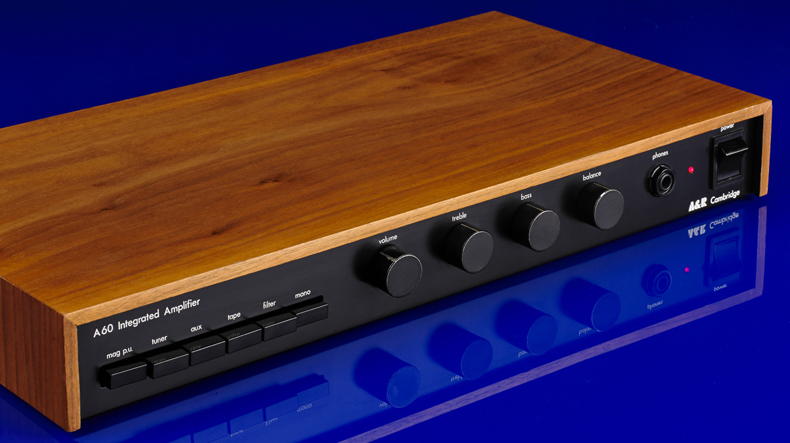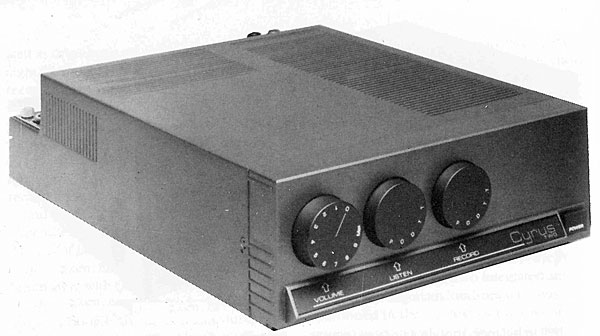Switching distortion is at the root of a lot of the problems with transistor amplifiers. The sound of those tiny three-legged semiconductors turning on and off on demand is ubiquitous, and most people have become accustomed to it — like rain in the winter. It also has a similar effect on sound; it becomes murky and dismal, making it less enjoyable to be outside in. Switching distortion does indeed produce a kind of ‘hash’ or ‘mush’; it’s like a dismal, suffocating fog that takes all the pleasure out of living.
It appears as a soft cloudiness in most of the better-designed solid-state models, similar to twiddling your camera lens out of focus slightly and increasing the shutter speed to generate a ‘underlit’ shot. You often don’t notice it in good mid-price amplifiers, preferring to focus on the aspects of the sound that the amp does right, such as bass grip and transient speed. Still, when compared to a complete Class A, the Class AB design sounds a little mushy and lifeless.
So why don’t you always use Class A? The answer is as simple as a twiddle of the volume dial. To run full Class A, the output transistors must be switched on all of the time (hence no switching distortion). Because this generates a lot of heat, your output power is limited by how much heat your case can disperse. Because most amps are only 430mm broad (and not half as deep), you’ll be lucky to receive the 20W that the Sugden produces. As a result, you appear to be stranded between Naims’ high-powered and punchy Class AB amplifiers and the Sugden’s open and airy sounding but weak kneed curios.
Due to cost and cooling constraints, the only way to pack a genuine punch is to throw a lot of money at it and build a giant powerhouse of a thing, like a Krell, capable of dispersing several bonfires’ worth of heat without even a single burned-out output component. The JA-88D from JungSon, on the other hand, appears to have found a way around this. Despite its £900 price tag, it claims to run 80W of pure Class A power per channel and is built like a Russian tank. Made in China, you get a lot of metal for your money. It’s big, at 470x430x190mm, but the finishing isn’t as good as some similarly priced amps; the cooling slats, for example, have slightly rough, abrasive edges.
Another drawback is the garish fascia, which features enormous bright blue lighted VU meters that aren’t to everyone’s liking. The volume control is a little noisy as it goes from 0 to 99 – there’s the occasional click and pop through the speakers, and regrettably, there’s some faint evidence of mains hum at close to full whack. Other small details, such as the natural hardwood remote control, are more appealing. The large slab of brushed aluminium utilized for the fascia appears to be thick enough to withstand a sniper rifle’s best attempts.
The JA-88D has a wonderfully open but brightly lighted sound that no other Class AB amplifier can match. It isn’t bright in the sense of being harsh or upfront, nor is it glossy, but it does bring the soundstage into clear perspective. It scythes through multi-layered rock music, getting to the heart of the matter. There is no discernible glare, brittleness, or grain in the vocals, not in the euphonic, valve-sense, but in the sense that there is no discernible glare, brittleness, or grain. We have a transistor amplifier that is transparent, smooth, and couth, as well as strong and punchy enough to aspirate large, difficult-to-drive loudspeakers. Even better, the midband is highly emotional and doesn’t shy away from dynamic contrasts.
The JungSon takes on a slightly harsher and edgier sound when wound up to extremely high levels. Fortunately, the threshold at which this occurs is significantly higher than regular listening levels. The bass retains its sledgehammer sound while remaining tuneful. It sounds like a Sugden A21a on steroids, or a Sugden A21a that has been working out in the gym for a long time and has evolved into a different beast. The JA-88D lacks a smidgeon of the A21a’s joyous tunefulness in the midrange, but the increased dynamic confidence more than compensates.
Its treble sparkle means it shouldn’t be used with bright ancillaries, but smooth ones work beautifully – especially as the amplifier ages, runs in, and smooths out. It has to be one of the best budget audiophile buys in a long time at under £900 in 2006.







